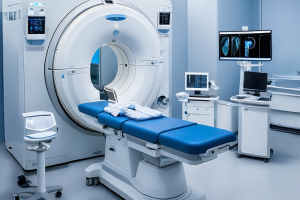Often recognized primarily for causing dry eyes and dry mouth, Sjogren's syndrome is a systemic autoimmune disease that extends far beyond these hallmark symptoms.
Affecting millions worldwide, this condition presents a broad spectrum of clinical manifestations that impact multiple and significantly affect quality of life.
Sjogren's Syndrome: More Than Just Sicca Symptoms
Sjogren's syndrome is traditionally characterized by lymphocytic infiltration and destruction of exocrine glands, leading to the classic symptoms of xerophthalmia (dry eyes) and xerostomia (dry mouth). However, Dr. Alan Baer, a rheumatologist, stresses that "focusing solely on dryness overlooks the systemic inflammatory processes that can affect joints, lungs, kidneys, and the nervous system."
Indeed, up to 30-40% of patients develop extra-glandular manifestations, which may precede or overshadow sicca symptoms. These systemic features include arthritis, interstitial lung disease, renal tubular acidosis, and peripheral neuropathy, highlighting the disease's complexity.
The Immune System's Role: Chronic Inflammation and Auto-antibodies
At the core of Sjogren's syndrome lies an aberrant immune response. Auto-antibodies such as anti-Ro/SSA and anti-La/SSB are hallmark serologic markers, reflecting B-cell hyperactivity. Recent research (2024) elucidates how chronic activation of type I interferon pathways perpetuates glandular and systemic inflammation.
Beyond Dryness: Systemic Manifestations and Their Impact
Musculoskeletal Involvement: Arthralgia and non-erosive arthritis affect a majority of patients, often mimicking rheumatoid arthritis but without joint destruction. Muscle pain and fatigue are common and debilitating.
Pulmonary Complications: Interstitial lung disease (ILD) is a serious concern, presenting with cough and progressive dyspnea. High-resolution CT scans and pulmonary function tests are essential for early detection.
Renal Disease: Tubulointerstitial nephritis and renal tubular acidosis may develop silently, leading to electrolyte imbalances and kidney dysfunction.
Neurological Features: Peripheral neuropathy, small fiber neuropathy, and even central nervous system involvement can cause sensory disturbances, cognitive impairment, and autonomic dysfunction.
Diagnostic Challenges: Navigating a Complex Clinical Picture
Diagnosing Sjogren's syndrome requires a combination of clinical evaluation, serology, and sometimes minor salivary gland biopsy. The 2016 ACR/EULAR classification criteria emphasize objective measures of glandular dysfunction alongside auto-antibody presence. However, Dr. Baer notes, "Patients with predominant systemic symptoms but minimal sicca manifestations pose diagnostic dilemmas, often delaying treatment initiation."
Advances in Treatment: Targeting Inflammation and B-Cell Activity
Current management focuses on symptom relief and immunomodulation. Artificial tears and saliva substitutes remain foundational for dryness. For systemic disease, hydroxychloroquine is widely used for musculoskeletal and constitutional symptoms.
Biologic therapies targeting B cells, such as rituximab, have shown promise in refractory cases, particularly for severe systemic involvement. Novel agents modulating interferon pathways and BAFF (B-cell activating factor) are under clinical investigation, offering hope for more precise interventions.
Living with Sjogren's: Holistic Care and Quality of Life
The chronic nature of Sjogren's syndrome demands comprehensive care addressing physical, emotional, and social dimensions. Fatigue and pain often impair daily functioning, necessitating multidisciplinary support including rheumatologists, pulmonologists, nephrologists, and mental health professionals.
Sjogren's syndrome extends well beyond dryness, encompassing a wide array of systemic manifestations driven by complex immune dysregulation. Early recognition and tailored treatment are crucial to prevent damage and enhance quality of life. As research advances, a deeper understanding of its pathogenesis will pave the way for innovative therapies targeting the disease's multifaceted nature.


